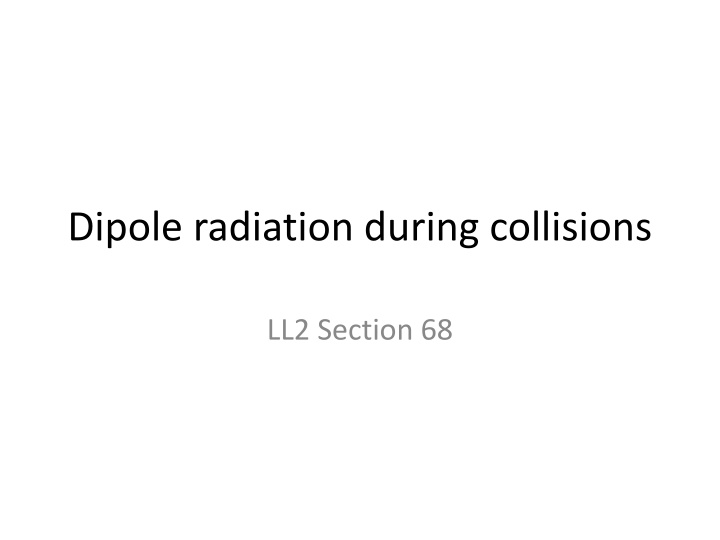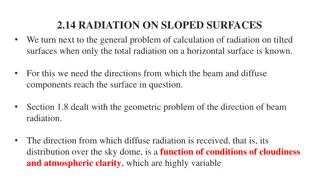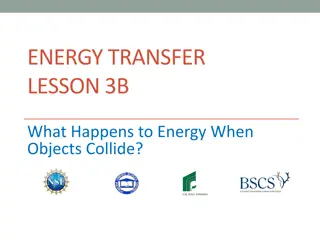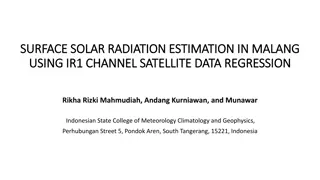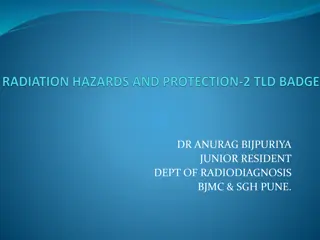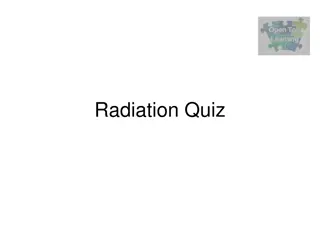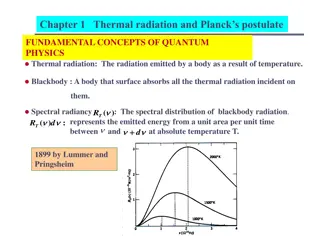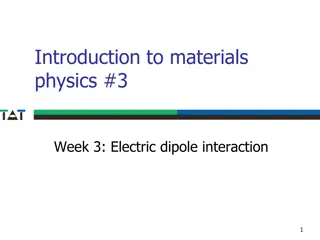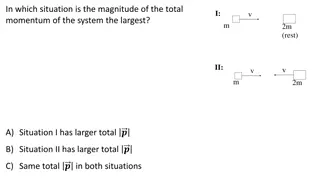Dipole radiation during collisions
Explore the total radiation per unit current density of particles in a beam scattered from a central field, including the angular distribution of emitted radiation. The process involves averaging over all possible directions perpendicular to the beam and considerations for orientation and axial symmetry.
Download Presentation

Please find below an Image/Link to download the presentation.
The content on the website is provided AS IS for your information and personal use only. It may not be sold, licensed, or shared on other websites without obtaining consent from the author.If you encounter any issues during the download, it is possible that the publisher has removed the file from their server.
You are allowed to download the files provided on this website for personal or commercial use, subject to the condition that they are used lawfully. All files are the property of their respective owners.
The content on the website is provided AS IS for your information and personal use only. It may not be sold, licensed, or shared on other websites without obtaining consent from the author.
E N D
Presentation Transcript
Dipole radiation during collisions LL2 Section 68
What is the total radiation per unit current density of particles in a beam that scatter from a scattering center? For unit current density (1 particle per unit time across unit area of beam cross section) Beam of particles Scattering center The number of particles per unit time with impact parameter between and + d is 2 d .
The total radiation from unit current density is = effective radiation Total energy of radiation from a single particle with a given impact parameter units Energy * area
What is the angular distribution of radiation emitted when a beam is scattered by a central field? For each particle in the beam (67.7)
We need to average over all possible directions of in the plane perpendicular to the beam
This term depends on the orientation of with respect to n. This squared magnitude does not depend on the orientation of
Scattering and radiation have axial symmetry, which we take to be along X. not averaged
Integration over time and impact parameter gives the effective radiation as a function of . ()^2
Averaging over polar angle with respect to beam direction gives total effective radiation. do = 4 sin d . 1 Average of B term is zero, giving for the total effective radiation: Next we consider polarization
The electric field for dipole radiation from (67.6) is Gives the direction of the polarization The first term is the projection of in the XY plane The difference is the component perpendicular to the XY plane
The magnetic field for dipole radiation is given by (67.5) Where is evaluated at the retarded time t = t-R0/c. The Z component is perpendicular to the XY plane that contains the scattering center and tbe field point. It is given by This also gives the projection of E on the XY plane. Take the square of E and average over directions of in the YZ plane.
= since
Alternatively, square the components of E that are perpendicular and parallel to the XY plane, and average over directions of in the YZ plane, then add the results.
Thus, the intensity is the sum of two independent parts, which are polarized in the mutually perpendicular planes XY and YZ. The part that is perpendicular to the XY plane is given by <cos2 >xy = 1/2 Projection of on the YZ plane
The effective radiation for the part of the intensity polarized perpendicular to the XY plane is This is isotropic, since there is no dependence on the polar angle for the direction vector n to the field-point P The effective radiation for the part of the intensity polarized parallel to the XY plane is which is found from according to not isotropic isotropic not isotropic
The spectrum of the total radiation is Is obtained by replacing the vector in by its Fourier component and multiplying by 2 (see p175, section 67) where The 4 factor comes from
